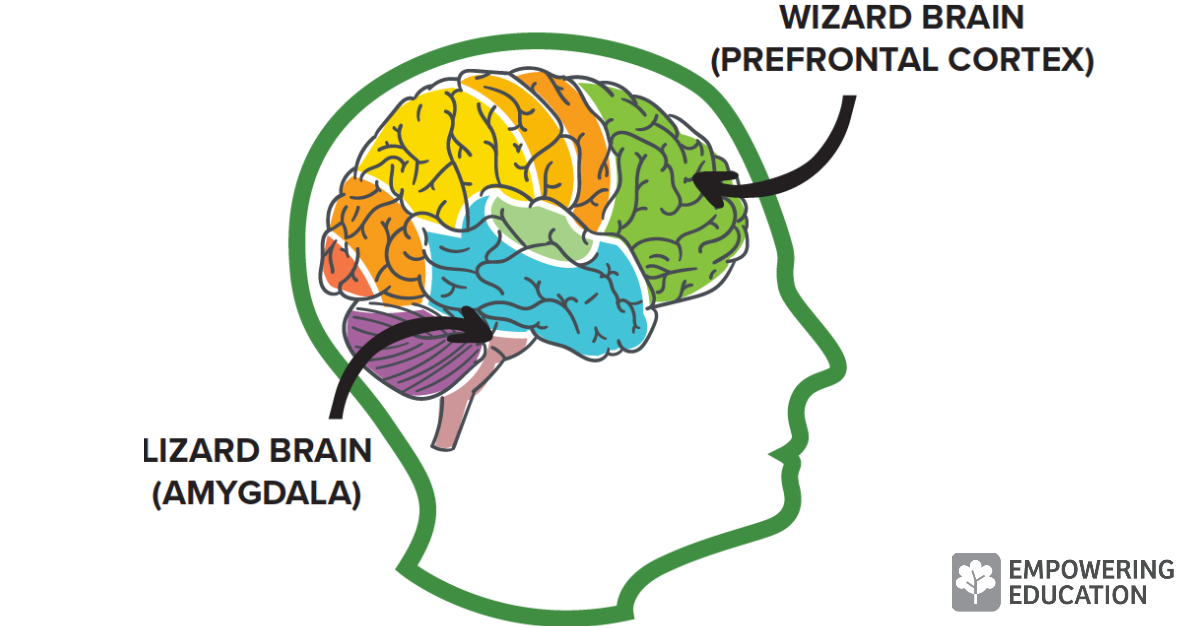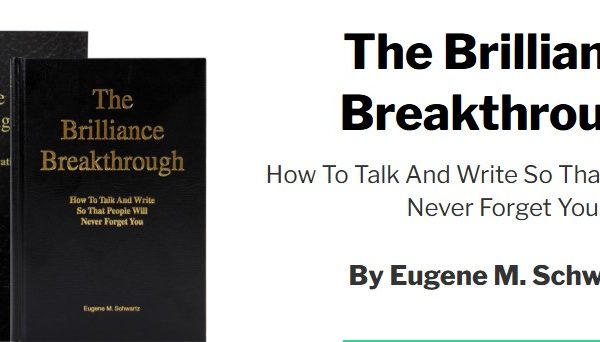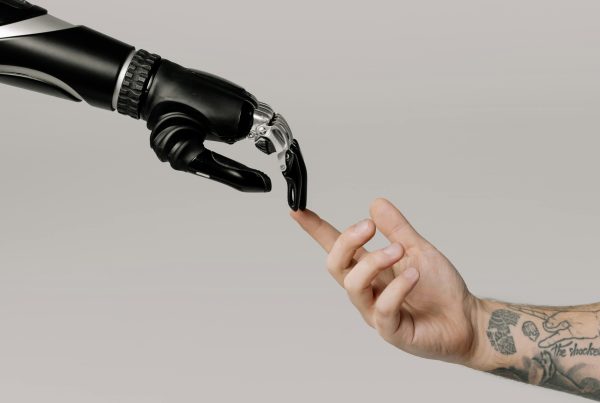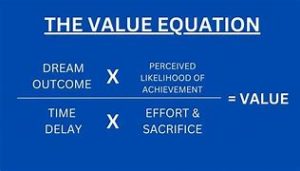Let me just say it straight.
Most copywriters are worshipping at the altar of the wrong gods.
Templates, headline formulas, swipe files, all that “10 words or less” garbage.
It’s like believing you can win the U.S. Open with a plastic putter from a mini-golf course.
You might get lucky once, but most of the time you’re dead in the water before you even tee up.
In brain chemistry copywriting, luck is not a strategy.
Here’s the part that hurts (or maybe liberates, depending how much coffee you’ve had)…
Your copy didn’t flop because of commas, headlines, or CTA colours.
It flopped because the brain chemistry was off.
That’s it.
No dopamine surge to make me curious.
No oxytocin to let me trust you.
No serotonin for the “status hit.”
No endorphins to ease my fears.
Maybe too much cortisol when you rammed me with urgency before I even cared.
These are neurochemical triggers in copy – the essential emotional triggers in copywriting that separate momentum from meh.
And yes, if you don’t trigger them in the right order it’s like trying to bake sourdough starting with frosting.
Looks nice. Tastes like a crime scene.
This is why copywriting sequence strategy matters more than any hack.
Think dopamine oxytocin serotonin copy, followed by relief (endorphins) and only measured urgency (avoid cortisol urgency mistakes).
The Myth of “Best Practices.”
Conventional wisdom feels so safe.
Benefits-first. Features-later.
People don’t read long copy. Blah blah blah.
I used to parrot it too. Then I watched a perfectly good offer – a $1,200 coaching package – die on the table because the copy (mine, embarrassingly) led with benefits when the reader’s brain was still screaming, “Wait, what’s the risk here? Who are you again?”
In neuroscience copywriting, that’s the classic benefits first vs sequence first error.
I remember staring at the analytics dashboard, refreshing, thinking the system must be broken.
Nope.
The copy was broken.
The sequence was wrong.
We had to fix low conversions with copy sequence, not headlines.
That’s the heartbeat of brain chemistry copywriting.
Now?
I don’t trust rules anymore.
I trust sequence.
The Neurocopy Analyser, this strange machine that feels like something out of Blade Runner, literally maps the chemicals paragraph by paragraph.
Think line-by-line copy analysis tool for humans.
It’s a weird moment the first time you run it and it says: “Hey, you lost dopamine in sentence four.”
You feel attacked.
Then you fix it, re-run it, and conversions tick upward like a heartbeat stabilizing (file under: “my personal Neurocopy Analyser review… spoiler, it stings, then sings”).
Insight #1: Benefits aren’t persuasive – timing is.
You can scream benefits from the rooftops.
“Lose 10 pounds in 10 days!”
Great.
My brain is still busy scanning for danger.
Cortisol is pumping.
Until you settle that, you’re just noise.
Want the short version of how to sequence emotions in sales copy?
Calm risk → reveal novelty → build trust → anchor status/value → deliver relief.
Think about walking through Times Square.
Neon everywhere. Flashing offers.
Which one do you pay attention to?
The one that interrupts the pattern of chaos at the right moment. Same with copy. It’s not the benefit. It’s when you drop it into the bloodstream, classic edit copy for emotional beats move inside brain chemistry copywriting.
Insight #2: Buyer personas are shallow – brains aren’t.
Traditional marketing loves demographics. Sally, 42, works in HR, drinks almond lattes.
Who cares?
I’ve met two “Sallys” at different conferences this year—one was obsessed with novelty (dopamine junkie), the other just wanted safety and belonging (oxytocin).
Same age, same job title, completely different chemical cocktail. Build neurographic buyer personas, not coffee profiles.
Once you map this, everything clicks.
Proof becomes serotonin (hello serotonin status signalling marketing).
Founder stories become oxytocin bridges (use oxytocin to build trust in copy).
Guarantees?
Endorphin gateways (endorphins to reduce buyer anxiety).
This is brain chemistry copywriting in real clothes.
Quick Tangent (bear with me).
This summer, I was stuck in a thunderstorm in Heathrow airport.
Flights delayed, people restless, cortisol levels through the roof. And then this one café booth gave out free samples of cinnamon pretzels.
The smell, the sweetness, it was endorphins in bread form.
Suddenly strangers were laughing together in line, joking about the storm.
That’s exactly what happens in copy when you hit the right molecule at the right time.
You shift the room. (If you ever doubted endorphins in marketing, try warm cinnamon air.)
Insight #3: Objections aren’t hurdles – they’re shortcuts.
The old script says: “Handle objections at the end.”
By then, half your readers are gone.
Objection handling in copywriting is chemistry, not courtesy.
Objections are basically your reader’s nervous system waving a neon sign: “This chemical is missing!”
Price complaints?
Usually a serotonin void (no sense of status or certainty).
Scepticism about results? They don’t trust you yet – oxytocin deficit. So we address them early, mid-flow – objection handling mid-page examples outperform end-loaded rebuttals.
Drop trust markers and guarantees in copy when cortisol peaks; braid proof right after novelty.
And yes, the Analyser literally highlights where to slot each move, so you use oxytocin to build trust in copy precisely when the audience is most ready.
Insight #4: Editing isn’t grammar – it’s chemistry
Listen, you can polish a corpse all day and it’s still dead.
Cutting adverbs won’t save you if the emotional beats are out of order.
Editing is about flow, not form—true copy editing for flow.
One misplaced metaphor can spike cortisol. A single generic testimonial can flop instead of dripping oxytocin. Even layout (the dreaded wall of grey) can suffocate dopamine.
The tool doesn’t just say “weak intro.”
It says: cortisol spike, no dopamine follow-up, oxytocin missing until paragraph seven. You fix it, re-run, and the piece excites.
Edit copy for emotional beats is not optional in brain chemistry copywriting.
Insight #5: Proof isn’t proof – it’s rhythm.
Humans crave patterns.
If you throw me a random pile of stats, my brain shrugs.
But if you show me the mechanism once, then again in a slightly different context, then reward me exactly when I expect it… I lean forward.
That’s serotonin.
That’s certainty.
That’s pattern recognition proof at work (and yes, it beats the old “pile it high” approach – proof that persuades pattern not pile).
Also: stop shouting claims. Teach mechanisms. The brain buys mechanism vs claim persuasion, not hype.
The Process, in Plain English
- We start with a copy brief. A ruthless little document that compresses your chaos (and helps map dopamine to conversions from the jump).
- Then, the buyer persona built around neurochemistry, not coffee preferences (neurographic buyer personas again).
- We mine objections. (Seriously, the five most common ones are enough to sink you.)
- Into the analyser it goes. Out comes the brain map… dopamine here, oxytocin here, cortisol spike to avoid here—the true five brain chemicals in copywriting.
- Emotional beat scan. Macro to micro. Paragraph, sentence, even word via a line-by-line copy analysis tool.
- Fix it. Rewrite. Re-run. See the chemistry re-balance in real time copywriting sequence strategy applied.
- Ship. Confident. Like watching a pilot’s cockpit lights go green before takeoff.
Final Thought (and yes, a challenge).
If you’re still clinging to “best practices,”
I get it.
They feel safe.
They let you pretend conversion is luck or design or inspiration. But if you care about accuracy – writing that literally syncs with how the brain decides – you have to challenge it.
This goes for long copy vs short copy conversions, too… length is secondary, sequencing is king.
So do this…
Read your copy and ask, what is the reader likely feeling right now?
What should they feel next?
If you can’t answer, neither can your copy.
That is brain chemistry copywriting in one ruthless question.
And then – this is the part where I get blunt – run it through The Neurocopy Analyser.
The world’s first and only tool that shows you which of the five brain chemicals your copy triggers, in what order, how strong.
It’ll tell you the ugly truth. And then it’ll tell you how to fix it.
Because here’s the reality… one missing molecule and you’ve lost them.
Sequence it wrong and you’ve wasted the shot.
But when you get it right? It doesn’t just convert. It feels inevitable.
Call it neuroscience copywriting, applied without superstition.
Write like a chemist. Edit like a conductor. And never EVER settle for the plastic putter when the game deserves a blade.




